
Tallinn is the most populous, primate, and capital city of Estonia. Situated on a bay in north Estonia, on the shore of the Gulf of Finland of the Baltic Sea, Tallinn has a population of 437,811 and administratively lies in the Harju maakond (county). Tallinn is the main financial, industrial, and cultural centre of Estonia. It is located 187 km (116 mi) northwest of the country's second largest city Tartu, however only 80 km (50 mi) south of Helsinki, Finland, also 320 km (200 mi) west of Saint Petersburg, Russia, 300 km (190 mi) north of Riga, Latvia, and 380 km (240 mi) east of Stockholm, Sweden. From the 13th century until the first half of the 20th century, Tallinn was known in most of the world by variants of its other historical name Reval.
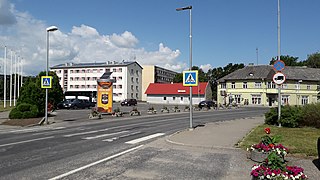
Tapa is a town in Tapa Parish, Lääne-Viru County, Estonia. Located at the junction of the country's Tallinn–Narva (west–east) and Tallinn–Tartu–Valga (north–south) railway lines, it is an important centre of transit for freight as well as rail passengers. A home to soldiers since the 1930s, Tapa also plays an important role in training young men and women in the Estonian Defense Forces. The Valgejõgi River passes Tapa on its northeastern side.

Konstantin Päts was an Estonian statesman and the country's President in 1938–1940. Päts was one of the most influential politicians of independent Estonia, and during the two decades prior to World War II he also served five times as the country's Prime Minister.

Mart Laar is an Estonian politician and historian. He served as the Prime Minister of Estonia from 1992 to 1994 and from 1999 to 2002. Laar is credited with having helped bring about Estonia's rapid economic development during the 1990s. He is a member of the centre-right Isamaa party.

The Kumu Art Museum is an art museum in Tallinn, Estonia. It is one of the largest museums in Estonia and one of the largest art museums in Northern Europe. It is one of the five branches of the Art Museum of Estonia, housing its main offices.

Dora Gordine was an Estonian Jewish Modernist figurative and portraitist sculptor. Her early career was influenced by the Noor Eesti group of artists who favoured Art Nouveau. She moved to Paris and on her thired marriage to Hon.Richard Hare (1907–66), her career expanded to the extent that some critics regarded her as amongst the finest sculptors of her generation. She specialized in portrait sculptures attracting international admirers from the: political, social, artistic, literary and theatrical worlds. Her legacy also includes a number of public space pieces. Her latter career was not as prolific or as fêted and Gordine was relatively unknown at the time of her death. Major exhibitions in London in 2006 and 2009 have revived her standing and her former home is now a museum.

The rail transport system in Estonia consists of about 1,200 kilometres (750 mi) of railway lines, of which 900 kilometres (560 mi) are currently in public use. The infrastructure of the railway network is mostly owned by the state and is regulated and surveyed by the Estonian Technical Surveillance Authority.

Estonian History Museum is a museum about the history of Estonia in Tallinn. It was initially established by pharmacist Dr. Johann Burchart who ran the town hall pharmacy known as the Raeapteek.
The Estonian Open Air Museum is a life-sized reconstruction of an 18th-19th century rural/fishing village, which includes church, tavern, schoolhouse, several mills, a fire station, twelve farmyards and net sheds. Furthermore, it includes a recently opened 20th century Soviet kolkhoz apartment building, and a prefabricated modern wooden house from 2019. The site spans 72 hectares of land and along with the farmyards, old public buildings are arranged singularly and in groups in a way that represents an overview of Estonian vernacular architecture of the past two centuries from across Estonia.

The following is an alphabetical list of articles related to the Republic of Estonia.

The Estonian Maritime Museum is located in the Fat Margaret tower in the old town of Tallinn. The museum presents the history of ships and navigation in Estonia and related to Estonia. Other parts of the Maritime Museum are the mine museum and the Seaplane Harbour museum where ships are presented. The museum claims to be one of the largest museums in Estonia and the most popular.
The Art Museum of Estonia was established in 1919. Originally based in Kadriorg Palace, the museum has expanded across several sites and today exhibits both international and local art works. At the end of the 1970s, in the 1980s the first branches of the Art Museum of Estonia were founded. Starting in 1995, all of the branches offer different educational programmes for children and young people. In 1996 the exhibition hall on the first floor of Rotermann Salt Storage was opened; this branch was closed in May 2005.

The history of rail transport in Estonia starts in 1870 when a line was opened connecting Paldiski, Tallinn, Tapa and Narva; the line extending all the way to St. Petersburg in Russia.
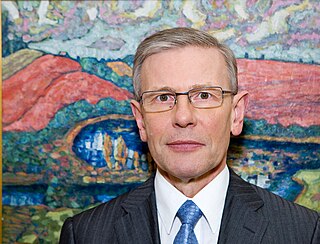
Enn Kunila is an Estonian entrepreneur and art collector.
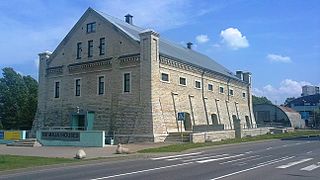
Estonian Museum of Architecture is an architecture museum in Tallinn, Estonia. It is located in the Rotermann quarter. The museum is a member of ICAM.
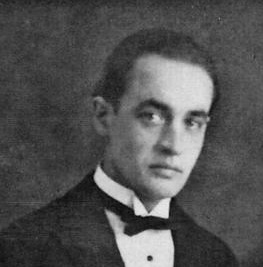
Kuno Veeber was an Estonian painter and graphic artist whose career began in the late 1910s.
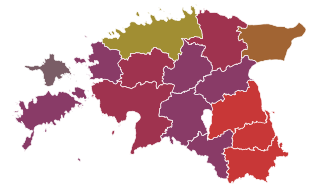
The COVID-19 pandemic in Estonia is part of the ongoing worldwide pandemic of coronavirus disease 2019 caused by severe acute respiratory syndrome coronavirus 2.

Patarei Prison, also known as Patarei Sea Fortress and Tallinn Central Prison, commonly known as The Battery (Patarei), is a building complex in Kalamaja district of Tallinn, Estonia. The premises cover approximately four hectares of a former sea fortress and prison, located on the shore of Tallinn Bay.

The Contemporary Art Museum of Estonia is a self-established, artist-run contemporary art museum in Tallinn, Estonia. EKKM was founded in 2006 by Anders Härm, Elin Kard, Neeme Külm and Marco Laimre. As an unconventional format of an institution, the organisation focuses on producing, exhibiting, collecting and initiating contemporary art. At the same time, they challenge and aim to alter the classical working methods of established art institutions.

The Estonian War Museum is a war museum in Viimsi, Estonia. The museum is dedicated to military history of Estonia. The museum is named after Estonian general Johan Laidoner.



















